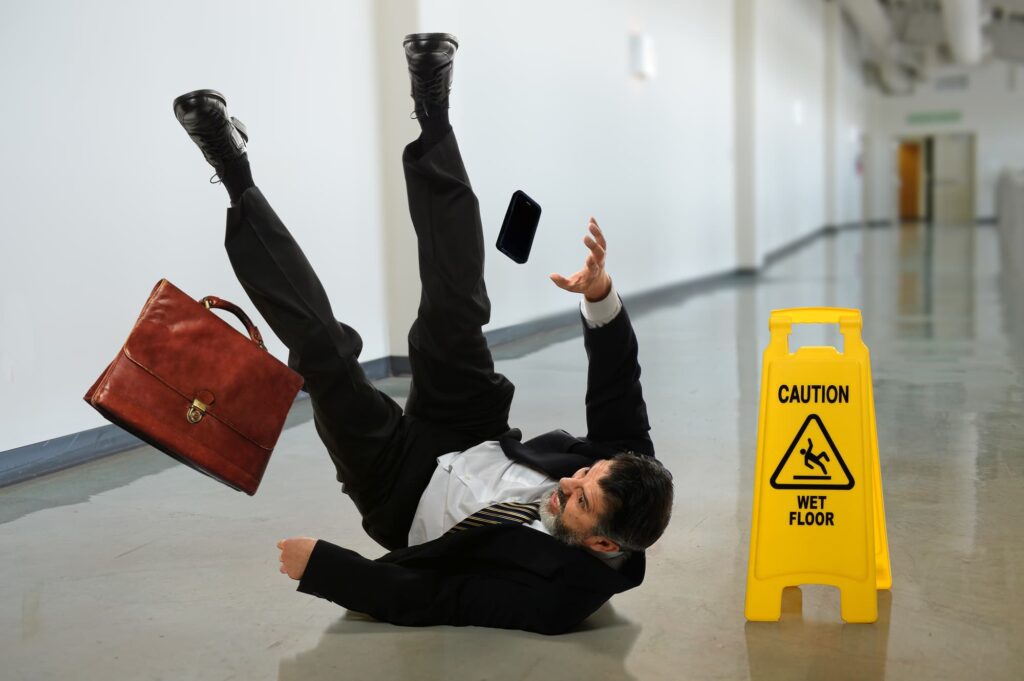Slip and fall accidents may occur when premise owners inadequately mitigate the risks that lead to these incidents. A slip and fall lawyer can help you determine if the incident qualifies for a negligence lawsuit. Here are seven common slip and fall risks:
1. Slippery Floors
Unaddressed spilled liquids can make polished or smooth floors, like tile, slippery. If wet floors are not marked, visitors may slip due to a lack of awareness. Property owners should always indicate potential slip areas with adequate signage, especially if the hazard is small and unnoticeable. A slip and fall lawyer can help you verify whether the premises are liable for a lawsuit if they did not clearly post notices of the risk.
2. Uneven Walking Surface
Uneven walking surfaces include sudden changes in elevation, bumps, and damaged surfaces with protruding objects. Legal professionals analyze maintenance records and local safety codes to determine if delayed repairs contributed to the injury.
Property owners with high sidewalks should provide an eye-catching warning, like bright paint on the edges. Damaged and loose surfaces, like bulging service holes and concrete slabs, require immediate attention to minimize trip risks.
3. Cluttered Floors and Obstacles
Extension cords snaking across office corridors or tangled wires near retail displays create tripping risks. This same risk extends to unsecured water hoses across factory floors or washing areas. Notices of unsecured cords and hoses should be posted when people unfamiliar with the environment visit.
Misplaced tools on construction sites and warehouses highlight poor housekeeping rules. Fallen goods and unchecked boxes in hallways and stores create a slip risk when visitors pass by. Lawyers specializing in slip and fall cases examine whether the property owner ignored basic safety measures, like securing cords or rerouting traffic around temporary setups or hazards.
4. Inadequately Designed Safety Devices
A ramp lacking slip-resistant texture or a guardrail installed too low undermines safety. Design flaws in handrails, stairs, or flooring materials often violate building codes. Attorneys can strengthen compensation claims by working with engineers to identify whether improper design or installation created the hazard.
Individuals with mobility challenges often use handrails to support themselves. Broken or damaged handrails compromise their stability, leading to fall and injury risks. Property managers should investigate handrails for wear and tear and replace or repair them as needed. Maintenance negligence could subject premise owners to a lawsuit should visitors become injured due to corroded or rotten handrails.
5. Poor Lighting
Dim stairwells, unlit parking garages, and shadowy store entrances hide obstacles, such as spills, steps, or debris. Poor lighting includes flickering lights, as the constant flashes might still impair vision. Legal teams evaluate whether lighting meets safety standards and if brighter fixtures could have prevented the incident. Proving negligence might involve reviewing maintenance logs to spot overlooked upgrades.
6. Bad Footwear
Worn-out soles or slick-bottomed shoes reduce traction. Impractical shoes, such as high heels, may pose a problem if the property owner does not adequately warn visitors of the risks when visiting a site. Faulty footwear in workplaces becomes a negligence problem if the business is responsible for equipping employees.
7. Weather Conditions
Rain-slicked parking lots, icy driveways, and snow-covered steps demand immediate attention. Property owners must clear weather-related hazards within reasonable timeframes. Legal professionals determine if delays in salting walkways or fixing drainage issues worsened the risk, linking the injury to preventable delays.
Consult a Slip and Fall Lawyer
After a slip and fall accident, an experienced lawyer can help you collect evidence, analyze claim viability, and negotiate reasonable compensation for damages in slip and fall cases. Look for an attorney near you, as many states approach trip and fall cases differently. Consult a slip and fall lawyer today if you are a victim of negligence.
